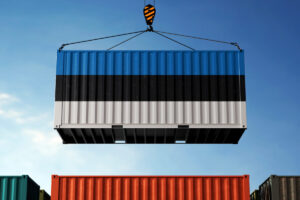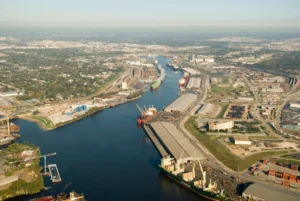As highlighted by Edition 85 of Port Technology’s e-Journal, vital nodes in the global supply chain are becoming smarter; does this mean that an end-to-end solution – or the “Uber of shipping” – is an imminent reality?
The answer to this question could change in the future, and perhaps sooner rather than later given the rate at which the industry is currently evolving. What is certain though, according to a range of leading voices across the sector, is that a definitive solution won’t emerge tomorrow.
Where should the industry place its focus then? While individual components of the supply chain are leveraging new technologies, systems and growing trends such as automation to optimize their own processes and operations, this doesn’t always translate to a more efficient logistics network.
“Collaboration is indeed taking place”, as Lars Jensen of SeaIntelligence admits, yet a combination of gains failing to trickle down throughout the chain, and the overall lack of meaningful standards, has created a barrier to serious development in this area.
Although this may be the situation now, it doesn’t have to be the situation forever. This article will consider the obstacles facing end-to-end solutions, but also effective means of collaboration that could make a real difference.
Individual Components
In his paper for Port Technology’s Edition 86, which is available to subscribers now, Jan Gardeitchik of the Port of Rotterdam reveals that there are multiple levels to achieving “digital maturity”, both within and beyond the gate.
Ports are, of course, one of many nodes in the overall supply chain that are striving to become more efficient; as explored in a recent PTI Insight, the growing sophistication of communications between machines, connected to each other by the Internet of Things (IoT), promises to drive automation forward and performance levels upward.
Jan Gardeitchik discusses how the industry must move towards a global netowrk of ports in a recent Port Technology technical paper
Another key aspect of achieving an end-to-end solution that is applicable across the entire industry is transparency. If the transportation of containers is more visible, and the transactions involved in that process also become accessible to every party, it will be much easier for ports and other stakeholders to plan effectively, especially in the event of a delay or exception.
Despite some degree of scepticism, there are technologies in development and already available to facilitate this level of transparency and openness.
Not only are more and more containers being equipped with smart tracking devices that provide a real-time view of cargo location and condition – such as those from Traxens currently being rolled out by APL – but blockchain pilots are also being launched to monitor the transfer of goods throughout each part of the chain. Wherever you look, real change and innovation is being felt.
Nadia Hewett, WEF, discusses the integration of blockchain into the maritime supply chain in a recent Port Technology technical paper
Breaks in the Chain
While many would expect the rise of new technologies to boost the feasibility of an end-to-end solution, these innovations are not always key to solving the real problems or accessing meaningful change, especially if they only work to improve an individual silo rather than the entire system.
The challenge, as described by MIT professor and transportation expert Yossi Sheffi, is to build “an efficient digital system for managing vessel movements, coordinated with terminal operations and land-side movements”. Ultimately, a much more holistic approach to logistics is needed.
In his paper, Yossi Sheffi considers the impact of growing demand and new technologies on what is already a complex ecosystem of stakeholders… @MIT @YossiSheffi #PTIEdition85 #SupplyChain #Collaborationhttps://t.co/8v49RplBT7
— Port Technology (PTI) (@PortTechnology) May 31, 2019
So, what is currently preventing this? One of the main hurdles that the supply chain has to overcome is the challenge of standardization; achieving an end-to-solution depends on interoperability, which itself depends on common standards being implemented by the various stakeholders along the chain.
At this moment however, as Jensen underlines in his paper, those stakeholders “have all developed their own digital systems and methodologies over the past decades”, from freight forwarders and shippers, to banks and government organizations. If everyone is operating differently, establishing uniformity becomes rather difficult.
Benefitting from Connectivity
It is apparent that if any significant progress is going to be made, establishing connectivity and a clear line of communication throughout the supply chain is an absolute necessity.
Yossi Sheffi asserts the importance of this unity, stating that the system of land transportation, terminal operations and maritime shipping – as well as every other agent working within the logistics network – “has to be integrated to deliver consistent travel time with real-time information flows”.
There remains, however, the problem of supply chain obstacles. Fortunately, it seems as though the industry is finally becoming conscious of the challenge ahead; in April 2019, the Digital Container Shipping Association of leading carriers such as Maersk and MSC was formed to drive the standardization movement and enable digitization across the sector.
With nine of the largest shipping lines in the world now on board, DCSA represents a significant share of industry… @DCSA_org #PTIDaily #Shipping #Carriers #Collaborationhttps://t.co/mOmULS9mtt
— Port Technology (PTI) (@PortTechnology) May 14, 2019
A similarly astounding collection of major shipping lines and terminal operators, including DP World, PSA, COSCO and CMA CGM, also agreed to cooperate last year as part of an agreement to develop a blockchain platform that will increase the transparency and efficiency of transportation.
If industry leaders are willing to collaborate, share data and build a model for the future, then the rest of the maritime supply chain may be encouraged to follow suit. This is the foundation needed for an end-to-end solution to become possible, a moment that will revolutionize not only the sector, but the entire face of global trade.









